Ageia’s PhysX: Success or Failure?
Tom’s Hardware has posted a 9-page article asking whether Ageia’s PhysX hardware for accelerating physics simulation is failing. It questions whether the hardware is even required for some of the effects it’s being used for and speculates on the future of the company’s efforts:
This is the second article looking at Ageia’s PhysX processor and the future for Ageia is not easy to predict. Currently it is an evangelist striving for better gameplay and effects physics, but Ageia needs more content utilizing its SDK and hardware for both gameplay and effects physics.
Read the entire article here.
Paint the Town with “De Blob” Physics Game
De Blob is an amazing project by students at the Utrecht School of the Arts and Utrecht University. The game was developed by a team of 9 in just four months, with everyone working minimal hours alongside other obligations. The output is tremendous. Joost van Dongen, the lead programmer, describes the game as:
It is a 3D game in which the player controls a ball of paint rolling through the city. The ball can absorb coloured NPC’s to become larger and change its colour. With the paint, the player can then proceed to paint the entire city. Almost everything is paintable: buildings, trees, cars and using the paint trace even the ground. The main goal of the game is to paint all 17 landmark buildings. Hardcore fanatics can also try to collect all 50 coins that are hidden around the level.
Perception vs. Simulation
What’s really interesting about De Blob, as Joost points out in his Gamedev.net post, is that the actual physics simulation of the main character is a simple rigid body sphere. Even though the game feels like you’re controlling a blob of fluid, this is entirely accomplished by the presentation. The squash and stretch of the blob and the squishy-sounding audio creates the illusion. It’s a very powerful example of how our internal, mental simulation of a game world can actually be much more complex than the computer’s underlying simulation.
Player perception is an important lesson for game developers to learn. You could enhance the fidelity of your physics simulation, or you could simply create the illusion of enhanced complexity. The flipside is possible, too, where a player could perceive a physics simulation as less complex than it really is. When you design a system, keep in mind that players spend more time playing the game in their heads than they do playing the hard-and-fast numbers inside some piece of silicon.
Mark Your Territory
The gameplay in De Blob is fairly basic, but remarkably well executed. The goal is to become the same color as various targets throughout the city and then touch them. The game uses a very elegant color-mixing scheme to accomplish this. For instance, if you need to turn green you’ll have to pick up a blue and a yellow person. Some of the targets require careful movement to reach, but for the most part the physics aspects of the game are very simplistic.
It’s Fun!
De Blob was designed as a kiosk game, where passer-bys in an information center would casually play for a few minutes and then move on. Because of this, the game doesn’t have a lot of structure on top of it. There is only one level, and there aren’t any rewards for actually completing your task.
Still, it’s a surprising amount of fun to play and a visual treat to look at. And, hey, it’s free, so give it a whirl. The only downside is steep system requirements–the developers recommend a 2Ghz machine with 512 MB of memory.
Download De Blob Game [mirror 1] [mirror 2] (99 MB)
More information on the game is available in this Gamedev.net discussion thread, which was posted by the lead programmer.
Related Posts:
- De Blob Coming to Wii
- Blob Physics Article in Game Developer Mag
- Tantalizing Gish 2 Tech Video
- Gish + Pinball + Amazing Art = Gumboy!
- List of Physics Games
Smashingly Fun Vehicle Physics with FlatOut 2
It’s rare that I review AAA retail games, or driving games, but Bugbear Entertainment’s Flat Out 2 is too remarkable to pass on any mention. I was a huge fan of the first title. It delivered very well-tuned driving physics in a standard race mode, as well as ragdoll-based minigames. FlatOut 2 takes the same formula–solid vehicle physics, an insane amount of object interaction on the track, and ragdoll minigames–and embellishes it with amazing production values. The result is worth talking about.
Vehicle Physics
The first FlatOut title has my favorite vehicle physics implementation in any racing game. Bugbear managed to strike the perfect balance between simulation physics and arcade physics. It really makes you feel like you’re a much better driver than you really are. The first game also let you set that realism slider when you started a new game by choosing between normal/pro modes. You can definitely feel the physics helpers in the easier mode.
FlatOut 2 no longer lets the player choose between easy and hard physics; it falls somewhere between the original game’s two modes in terms of fidelity of simulation. I was disappointed by this, because I really enjoyed the challenge of the more realistic physics in the first game. Still, the game strikes a remarkable balance between simple, arcade physics, and squirrelly, difficult to control simulation-style physics (there’s a lot to tweak, too, as this screenshot shows). The career mode is broken up into three classes of cars. In addition to adding speed, the higher classes of cars also subtly transition away from arcade-y physics helpers to harder-core simulation physics.
Thousands of Physics Objects
One of the standout features in FlatOut 2 is the sheer number of physics objects placed on each track. We’re talking thousands of objects per level. Tons of buildings, fences, and structures are destructible, and the game actually rewards you with nitro for smashing through them. This adds chaos to the races, both visually and physically. By the last lap objects are littering the track, which creates the risk of popping your car into the air. Even a brief lapse in traction could result in failed cornering.
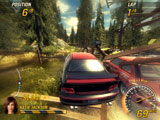
(Destructible Fence in FlatOut 2
Ragdoll Minigames
The gimmick in the original FlatOut was that if a car was hit hard enough, its driver would be tossed through the windshield as a physics ragdoll. While it was occasionally entertaining to feel the bump of another driver beneath your wheels, they expanded on this concept by creating a bunch of minigames where you deliberately eject your driver in bizarre facsimiles of sporting events.
FlatOut 2 has 8 minigames, from the high jump to soccer to curling. The core of these minigames is selecting the angle of launch, but you can also direct your ragdoll driver midair to fine-tune your intended landing. The minigames have a very Dismount-like or demoscene-ish feel to them (which makes sense, since roughly a quarter of Bugbear’s employees have demoscene backgrounds, and their business development director is one of the main organizers of Assembly). I didn’t find any of the minigames particularly engaging on a long-term level, but they are great fun to optimize and complete the first time through.
My Favorite Racing Game
FlatOut 2 does a great job of extending the FlatOut franchise. I’m not sure if I like the physics in FlatOut 2 quite as much as I enjoyed the first game, but combined they’re easily my favorite titles in the genre. It’s easily my favorite implementation of vehicle physics when it comes to a combination of arcade and true-to-life simulation physics.
The North American release of FlatOut 2 actually isn’t for another two weeks (this review is based on the European version). The PC version is $29.99, and the Xbox/PS2 version is $39.99.
I’ll update with a demo link when one is available.
Related Posts:
- List of Physics Games
- Insane Stunt Car Antics: Trackmania Nations
- Interview with Matthew Wegner (Fun-Motion.com)


 (Rate this game! 329 votes, average: 4.07 out of 5)
(Rate this game! 329 votes, average: 4.07 out of 5)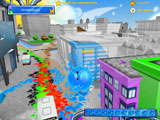
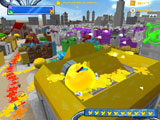
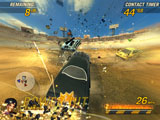
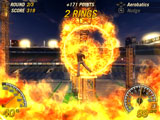
 My name is Matthew Wegner, and this site is dedicated to physics games.
My name is Matthew Wegner, and this site is dedicated to physics games.